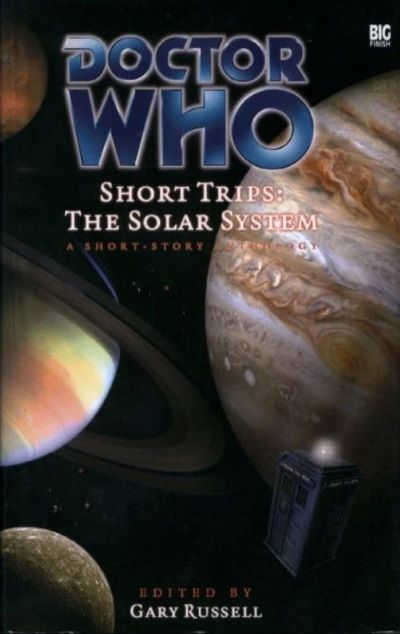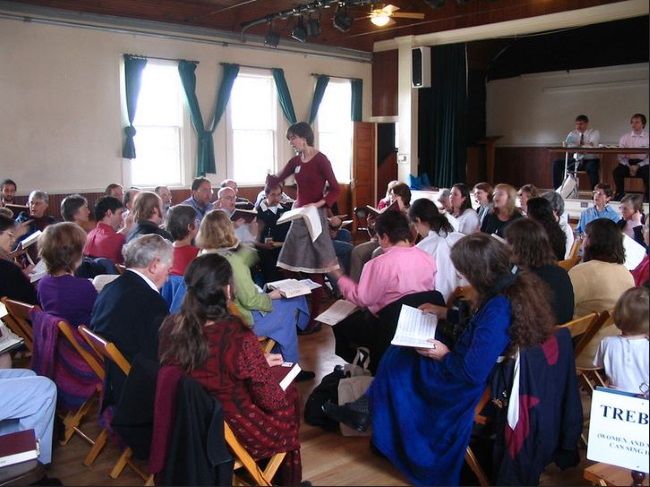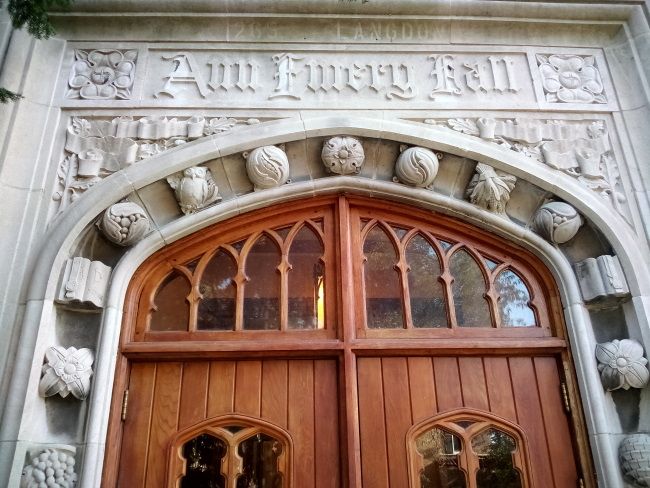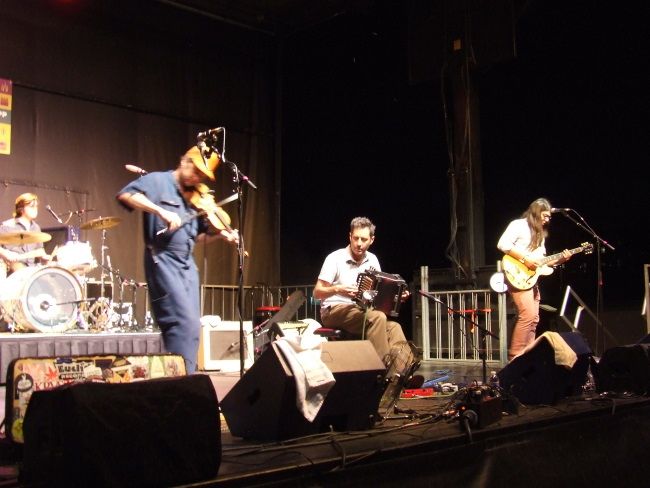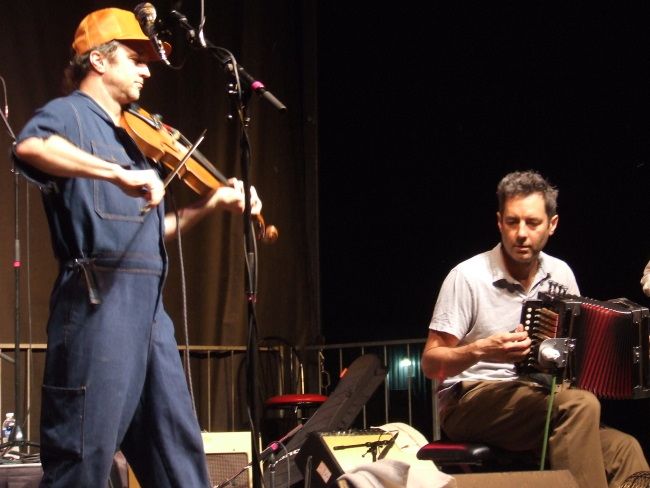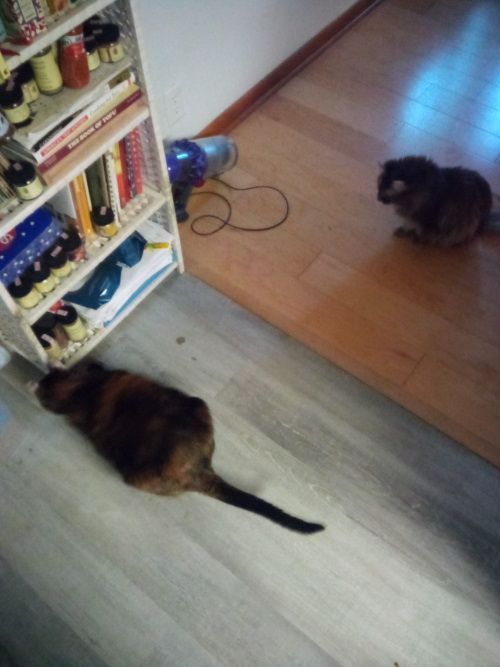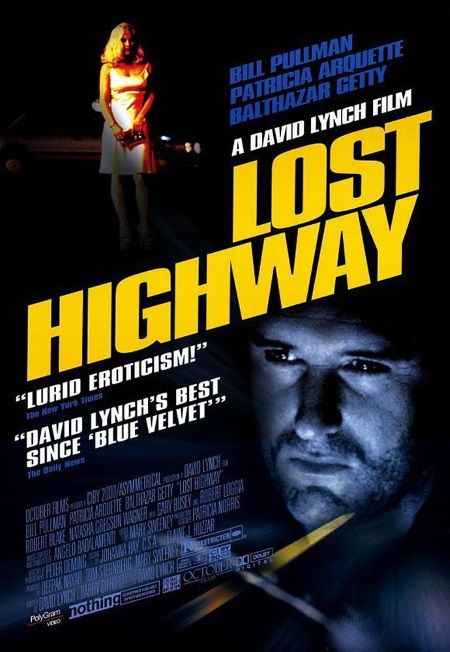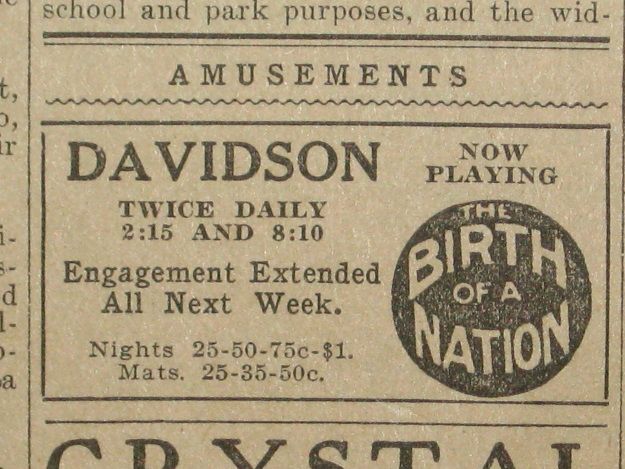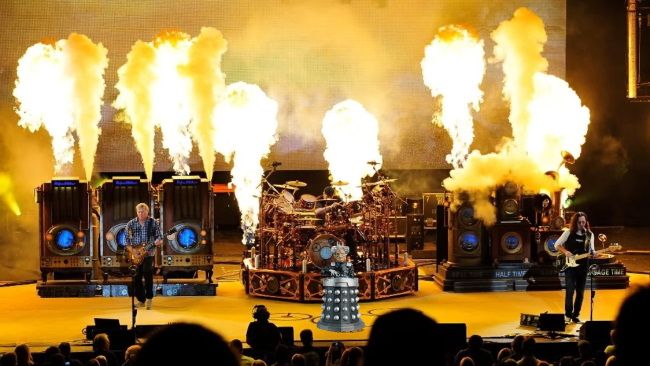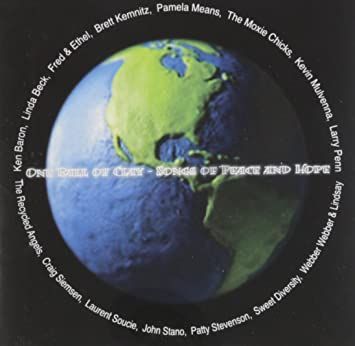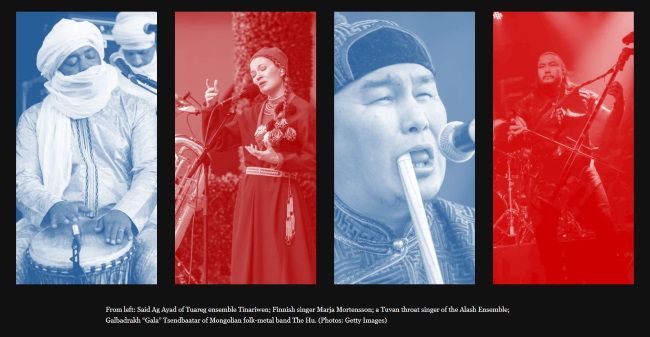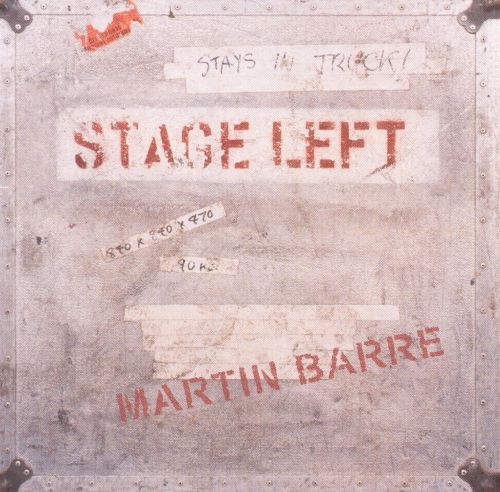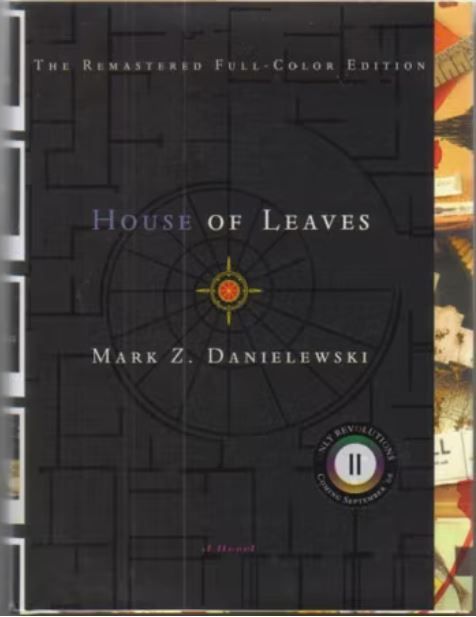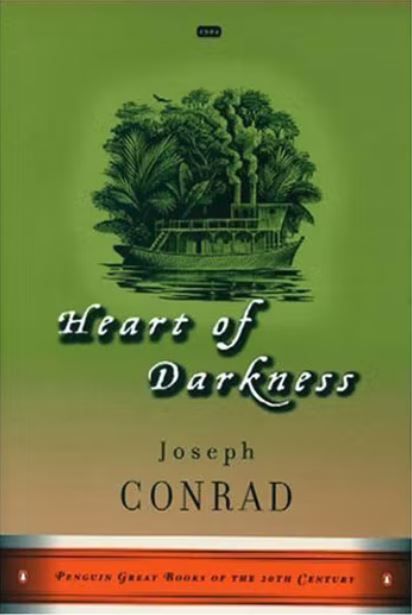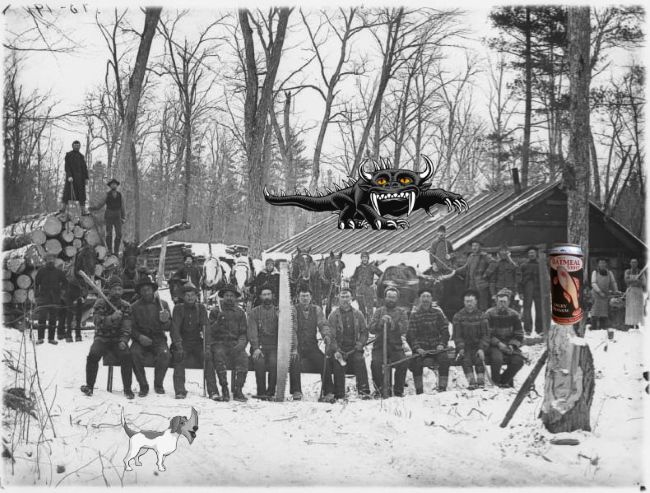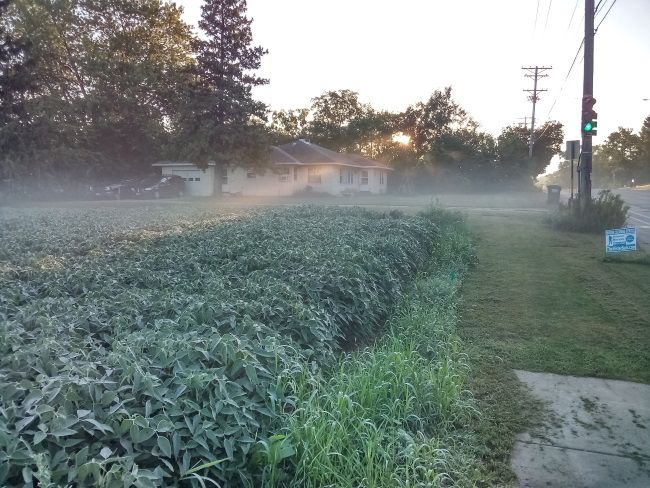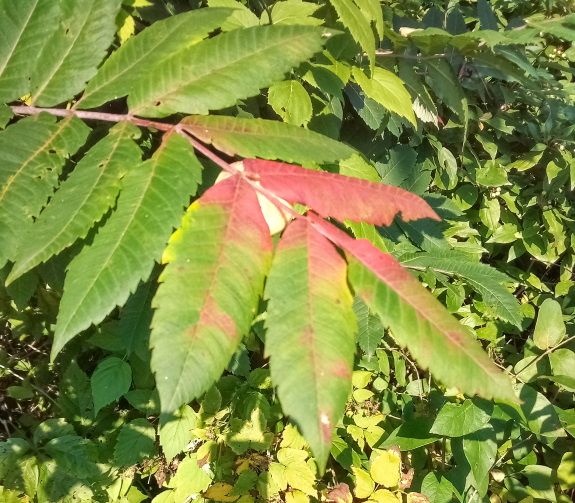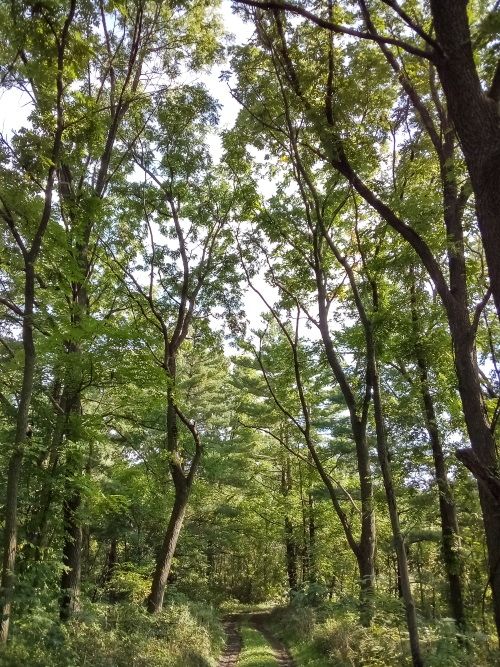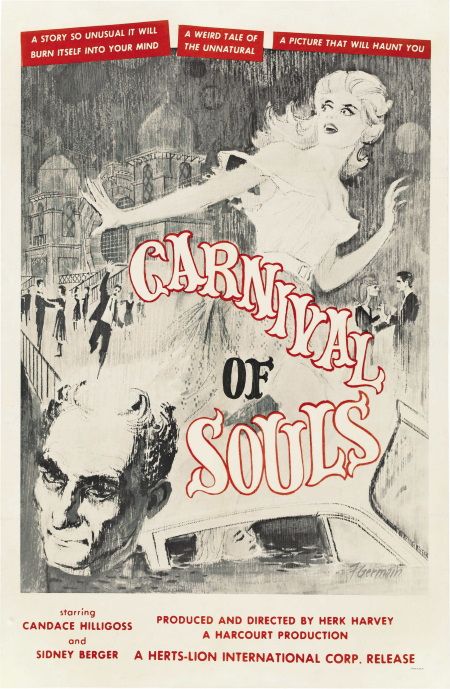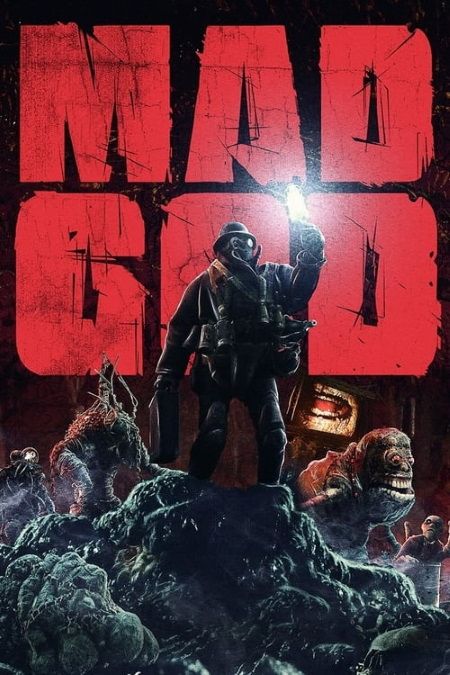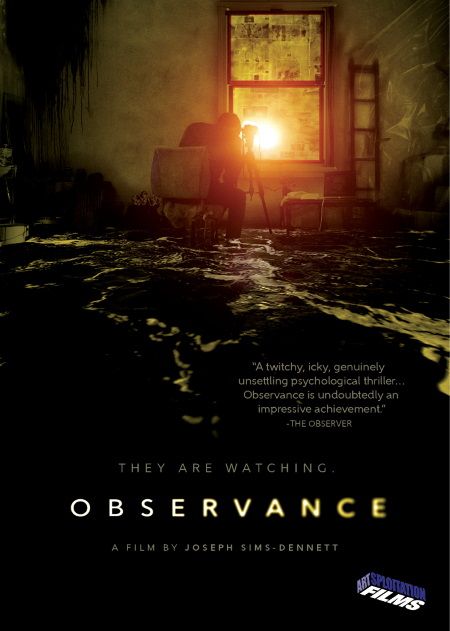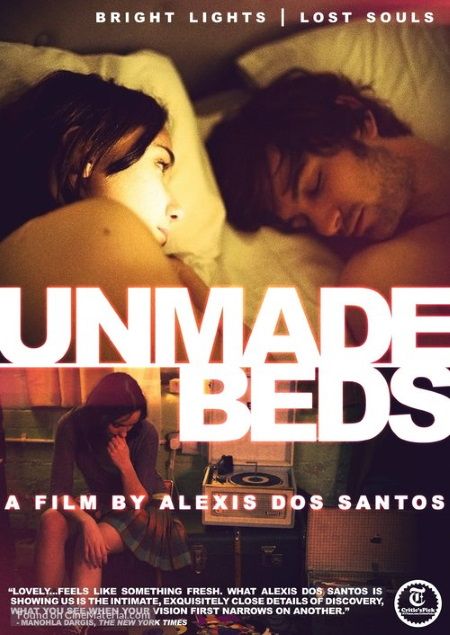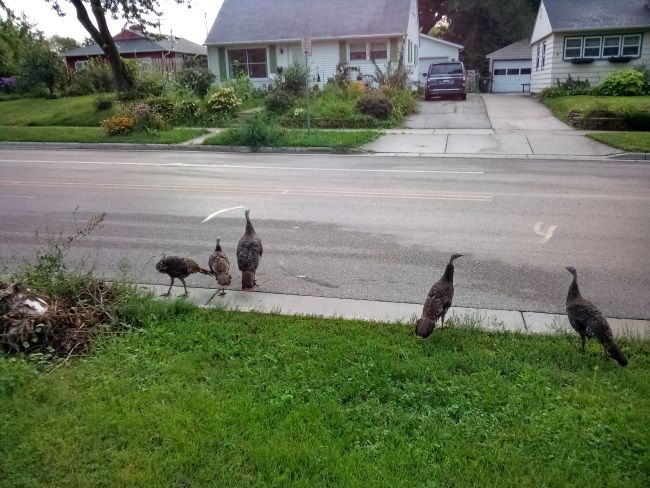I was listening to the latest Rolling Stone Music Now podcast about the new Beatles box set where the hosts go through Revolver track by track. When they played a clip of "Got to Get You into My Life", my mind immediately heard "Got to Get You Trapped Under Ice" by Milwaukee's Beatallica.
29 November, 2022
New Metallica Single "Lux Æterna"
Metallica has a new album out in the spring but the first taste came out this week: "Lux Æterna". It's a great, short burst of thrash.
Uncle Tupelo - Anodyne
The members of Uncle Tupelo didn't know that Anodyne would prove to be their final album nor could they have known that history would look so favorably upon it. Nearly 10 years after its release in October of 1993, history regards The Tupes as pioneers of the alt.country movement and Anodyne as their finest hour. For those of you unfamiliar with the alt.country movement, a word of explanation is in order.
Like any genre in music, alternative country is fairly nebulous. It probably started sometime in the late 80's and, in general, encompasses artists who blend rock with country and/or American folk music as well as musicians who play something more akin to "traditional" country as opposed to the overly polished suburban-infused music that emanates from Nashville these days. Even No Depression, a magazine dedicated to the alt.country movement has the byline, "The Alternative Country (Whatever That Is) Bimonthly." “No Depression” is also another name for the alternative country movement and takes its name from Uncle Tupelo's first album of the same name which, in turn, was derived from the song of the same name by the Carter Family which appears on said album. Whew!
The Tupes, as they are fondly referred to, began in 1987 in Belleville, IL and consisted of Jay Farrar (guitar, vocals), Jeff Tweedy (bass, vocals), and Mike Heidhorn (drums). No Depression appeared in 1990 and was a blistering mix of punk and country. Their second album, Still Feel Gone, was released the following year. Relentless gigging and great songs garnered them critical praise and a dedicated following. 1992 saw the release of March 16-20, 1992. Produced by REM's Peter Buck, it was nearly bereft of overdubs with hardly a trace of electric instrumentation. It’s blend of original material and covers of traditional American folk songs proved successful and the band were signed by a major label, Sire. After March 16-20, 1992, Heidorn left the band and was replaced by Ken Coomer. Desiring to avoid overdubs again, they brought John Stirrat in on bass as well as multi-instrumentalist Max Johnston. In the spring of 1993 they retired to a recording studio in Austin, TX.
For Anodyne, The Replacements and The Misfits were replaced as touchstones by Neil Young and Creedence Clearwater Revival. This is not to say that there's no high-powered electric guitar to be found, just merely that slashing chords became transformed into melodic washes of fuzz. But, perhaps in a nod to March 16-22, 1992, the album begins with a couple acoustic numbers.
"Slate" lazily starts the proceedings with a plaintive guitar and mournful fiddle. Sung by Farrar, it's about loneliness ("can't find you now/didn't know you then") and it sets the tone for the rest of his contributions to the album. Tweedy's paean to healing power of music, "Acuff-Rose," follows. It's a sprightly tune with some manic mandolin and its lyrics stand in contrast to those of the preceding song: “Sometimes I get the feeling/that everything’s OK.”
The album counterpoints Farrar's intimate doses of melancholy with more hopeful slices of life from Tweedy, even if they are bittersweet.
In Farrar's fiery "Chickamauga" (named after the site of a Civil War battle), a bit of the old punk spirit shines through as the narrator waxes angrily over the end of a relationship. Lloyd Maines' pedal steel guitar underpins Farrar's pleas for an end to the pain in "Anodyne", but his playing also gives "No Sense in Lovin'" a playful feel in contrast to the lyrics. Tweedy covers the parting of lovers in "The Long Cut" but gives a hint of reconciliation: "If you wanna take the long cut/we'll get there eventually." Texan Doug Sahm joins the band in a cover of his "Give Back the Keys to My Heart." However, the Tex-Mex lilt is stripped leaving a stark plea, full of regret and remorse.
Every song here has a great melody and the playing is fantastic throughout. Lyrically, the band moved away from chronicling working-class/small town existence towards more universal themes. And they did so very well. Tweedy's take on the band's course in the music business wallows in irony while the insistent dobro of "Fifteen Keys" sits well beside a clutch of sibilant metaphors. Anodyne was surely the band's most mature album - too bad it was their last.
Rhino re-released Anodyne earlier this year remastered and with bonus tracks. The sound is crisper giving the performances an even greater intimacy. Of the five bonus tracks, two were previously unreleased. "Stay True" is a blistering rocker very much in the spirit of their first two albums. The dirge-like "Wherever" has an aching fiddle bolstering the sad imagery of watching a lover depart. A cover of Waylon Jennings' "Are You Sure Hand Done It This Way?" features Texan Joe Ely and remains a timely message to the Nashville establishment. Two live cuts from a promotional EP round out the CD. Terry Fell's "Truck Drivin' Man" is played as if fueled by amphetamines. It hardly seems that Johnston could play the fiddle any faster. Finally we have a great cover of the Dale Hawkins rockabilly classic "Suzy Q," which was also done by CCR. Laced with feedback and an infectious groove, it ends the album on a raucous, fun note.
(This was originally published at The Green Man Review back in 2003-08.)
A Hail Mary
I was recently introduced to an album called The Music of Hildegard von Bingen Part One by a pair of New Yorkers, Micah Frank and Chet Doxas. Frank plays electronics, does samples, and assembles tape loops while Doxas plays all manner of woodwinds.
Their new album, more of an EP, really, pairs one original song, "Silva Ignis", with their interpretations of four pieces by the 12th century German abbess, writer, composer, et al Hildegard von Bingen. Broadly speaking, their music is ambient and, while it's not a genre I listen to very much, The Music of Hildegard von Bingen Part One is fantastic.
Check out their version of "Ave Maria". Too much ambient music is comprised of lethargic washes of atmospheric synthesizers. But here Frank imbues a patchwork background with a modest rhythm and lets the scene be colored by Doxas as well as Mary Lattimore on harp. Simply gorgeous, never boring.
Check out their Bandcamp site for more music and purchase options.
A Short Trip to Charon
The next stop in my Second Doctor marathon is the short story "Pluto" by Dale Smith in the Big Finish collection Short Trips: The Solar System. (Here's the first.)
While not the most prolific writer of Doctor Who material, Smith has penned a few things but I have only read his Seventh Doctor book, Heritage, an installment in the BBC Books Past Doctor Adventures from 2002. I enjoyed that tale of drought at every level with its sepulchral tone and the fact that it covered a time span of only one day.
"Pluto" finds the Doctor, Ben, and Polly on the titular planet's moon, Charon. The TARDIS brings them to a biodome (cue Pauly Shore references) and, in classic Doctor Who style, they stumble upon a corpse. So of course they are accused of being murderers just a few sentences later when a landing party headed by the cybernetic Professor Magellan and including his human sidekicks, Ray and Spinks, appears on the scene. But all is not as it seems with the humans having weird dreams leading to a subterranean discovery...
Doctor Who short stories tend to fall into one of two categories for me. First is a tale that tends towards following the conventions of the show but, due to space limits, is very abridged and compressed. They squeeze everything you'd expect in a Doctor Who story into many fewer pages so the story is allowed no room to breathe and characters are two dimensional. Second is when an author embraces the constraints of the format and leaves expectations behind.
Broadly speaking, "Pluto" is in the former category. Smith sets up a highly intriguing scenario but there just isn't time for him to flesh it out, to keep the mystery going as long as it should. However, I give him points for playing with our expectations. Normally, after the Doctor and his companions are found hovering over a dead body, it takes a while for them to prove their innocence. Here, one of their accusers quickly ascertains that they were not responsible.
Better than most Doctor Who short stories, "Pluto" is a fun little story but I am still a bigger fan of the novels.
28 November, 2022
All Your Feeble Light
There are occasions when I am actually ahead of the curve, when I have taken to some cultural artifact, artist, or genre before popular culture at-large has. Now, I grant you that this happens about as often as Brigadoon appears out of the mists of the Scottish Highlands, but it does happen. One instance of this exceedingly rare phenomenon occurred back in the late 1990s when I dug into the folk music of the American South years before the O Brother, Where Art Thou? soundtrack was flying off of the shelves at Starbucks in the early days of the new millennium.
My decision to dive into this corner of America’s musical past was likely the confluence of multiple events. The first is that I was a fan of some alt-country and that genre’s progenitor, Uncle Tupelo, had covered various old-timey songs like “No Depression in Heaven”, “Coalminers”, and “Satan, Your Kingdom Must Come Down” so I was inspired to investigate the versions of these songs that had inspired the band. And, afterwards, that whole area of American folk music.
On a less personal note, the second was that American folk music of the Southern variety was in the air in the years leading up to O Brother, Where Art Thou?. There was the aforementioned alt-country movement making inroads into the larger popular culture and 1997 saw the release of Harry Smith’s Anthology of American Folk Music on CD. This album inspired many rock musicians such as Bob Dylan and The Grateful Dead and its re-release engendered a lot of conversation about the artists featured on it, what material Smith chose not to include, the roots of rock, et al.
The last event here was again a personal one. My roommate had bought Sounds of the South, a 4-CD box set of Alan Lomax field recordings from around the American south made in 1959-60.
It was like Fate was leading me along and I immediately dove into the album. It gave a wide overview of the material that Lomax recorded on those particular recording trips. There’s Blue Ridge Mountain music, blues, “Negro” church music, white spirituals, and American folk songs for children. The set captures some stunning performances of simply vital music.
After I had absorbed Sounds of the South, I discovered that Rounder Records had released more of this stuff in the form of a 13-CD series called Southern Journey which compiled previously released recordings from Lomax's 1959-60 recording trips as well as material that had yet to see the light of day. I ended up buying the first 5 or 6 and I and my wallet lived to the tell the tale as diving into the world of Alan Lomax recordings is truly going down the rabbit hole. His recordings are so numerous and so varied, it can take a lifetime to sort through.
The first volume of the Southern Journey series was subtitled “Voices from the American South” and is basically a tantalizing sample of the various types of music that the other 12 volumes would cover more in-depth. One song from this album that has stuck with me over the years (decades!) is “The Last Words of Copernicus” as performed by the Alabama Sacred Harp Singers.
Sounds of the South had, if memory serves, a couple Sacred Harp songs and they certainly made an impression on me. These are a cappella songs performed by a group of singers and the result is a stunning, if I may borrow a Phil Spector phrase, wall of sound.
Sacred Harp or shape note singing, as it's also known as, began in 17th century New England. Liner notes say that it was developed “as a way to teach the small congregation lacking instruments and trained singers to function as a choir.” It continues “Hymns were written out with bass, treble, and soprano parts” – fa, so, la – and charts have unique notation. (Check out https://fasola.org/ for more info.)
“The Last Words of Copernicus” is apparently an 18th century poem that was brought into the Sacred Harp world 100 or so years later. The power of the performance struck me immediately and it became an instant favorite of mine. As with all Sacred Harp songs, it has a spine-tingling polyphony of voices that just dig into your soul. I think what set “The Last Words of Copernicus” apart for me was that it was a little bit faster than the other songs I had heard and, rather than everyone just singing at the same time, some lines are offset as in a round. And so different strands all come together at the end just as various elements of our lives do when our time comes.
The piece ends with these lines:
And thou refulgent orb of day in brighter flames array'd
My soul which springs beyond thy sphere no more demands thy aid
These words along with the wistful tone of the song really hit home when I was at my father’s house on the day that my stepmother died. She was in the hospital and it was understood that her days were numbered. My stepsister and a couple stepbrothers were at her side when she passed while I was at home with my father. One of my stepsiblings called to deliver the terrible news and my father was shattered. He began sobbing inconsolably and darted around the house like a chicken with its head cut off. He’d bounce off a wall into the dining room and then turn around and head for the living room.
It was a long day and I was very relieved when the old man fell asleep as this afforded me a little time to breathe. I cannot recall if I had the Southern Journey CD in my car or a mix CD or what but I had “The Last Words of Copernicus” with me. The silence of being alone was too much so I put it on and was overwhelmed by its aching beauty and the sadness of the moment as a sense of despondency still hung in the air like a miasma. I would have to deal with my father again soon enough but listening to “The Last Words of Copernicus” that night helped put my mind at ease.
A Salt & Vinegar Miscellany IX
I think that my local supermarket started carrying Yoder's Pork Rinds only earlier this year. They are stocked on shelves next to the cooler with pickles, sauerkraut, horseradish, et al. instead of on the completely opposite side of the store along with the rest of the snacks.
When I put my nose in the bag, they smelled like pork rinds with perhaps a hint of vinegar. They taste much the same with the precious vinegar tang being really mellow. At least they have lots of porky goodness.
The Corona Diaries Vol. 67: Redux
(early September 2022)
(Enjoy the prelude.)
September started on a musical note. Or rather, many musical notes. A concert series runs during the summer months down at one of Madison’s newer parks, McPike, which is smack dab in the middle of the isthmus. This was to be the last concert of the season and would feature The Cash Box Kings, whom I last saw back in June, and Lost Bayou Ramblers, a Louisiana band that plays Cajun music, sometimes as if the bayou was on Saturn, with the spirit of Jimi Hendrix.
But first I wanted to grab some more photographs of mundane Madison. My task was to get more pictures of buildings with their names (usually set in stone) over the entryway. Like this one:
I believe that Ann Emery Hall is apartments today but was originally built back in the 1930s as an all-women’s dorm. What do you call those things around the doorway? Reliefs? They had some very nice detail.
Is this a Torah?
I used to work at this place.
For a while, I was incredulous at the notion that it was simply and unimaginatively called “State Office Building” but that appears to be its official nom de boring. The interior is really nice and I believe you can still mail a letter by dropping it down the mail chute, even from the upper floors. However, when I worked there, I’d occasionally hear about a letter getting stuck in the chute.
A bit of trivia. When I worked there, I would sometimes have to mail computer equipment for warranty replacement, such as a dead laptop battery. Most of the time I dealt with a really mild-mannered guy in the mail room named Jon. One day someone told me that Jon (French) was a drummer and that he’d played with various luminaries such as Curtis Mayfield back in the day. Well, I just had to know if this was true and so I marched down the hall to the mail room one day to ask him about this rumor. Well, turns out what I'd heard was true as Jon confirmed that he had played with Curtis Mayfield, et al. In fact, I believe you can hear French’s work on the Super Fly soundtrack. Jon was so humble about it – almost to the point of being blasé – while I was standing there with my mouth agog, he was rattling off the list of sessions he played on as if he were telling me what he ate for breakfast.
This in addition to Clyde Stubblefield, James Brown’s long time drummer, who moved to Madison in 1971. Very odd how these great R&B drummers ended up here in Madison.
In addition to building names, I’ve been photographing addresses with halvsies like this one:
That belongs to an entrance at the back of a bakery, hence the spoon.
Evening arrived and I was off to McPike Park for the music. I locked up my bike before grabbing a beer as The Cash Box Kings hit the stage.
Singer Oscar Wilson hails from Chicago – 43rd and Wells, I believe – while the other singer (and harmonica player), Joe Nosek, is a Madisonian who grew up in suburban Chicago. The second guitarist, whose name I cannot recall was a gentleman from Japan. I found this odd as, the last time I saw them perform, the guest piano player was a woman from Japan. You just never know who'll show up with The Cash Box Kings, I guess.
Their drummer at this gig was Kenny “Beady Eyes” Smith, also hailing from Chicago. I know this is going to sound dorky but that guy has great cymbal work. Just the way he moved from high-hat to ride cymbal and back. What a groove!
The weather was great, the beer was great, and The Cash Box Kings were great. There were smiles everywhere and they sounded like they were having fun. And the music was the kind to get your booty shakin'.
After a brief interval, Lost Bayou Ramblers took the stage. I heard them for the first time last September on an episode of Accordion Noir, a radio show out of Vancouver dedicated to the titular instrument. I immediately took to the live version of “Pine Grove Blues” featured on that program. It was Cajun music but heavier, fuzzier, and grittier. Think about how the acoustic Delta blues got electrified when musicians moved to Chicago and that'll give you an idea.
Brothers Louis and Andre lead the band on fiddle and accordion, respectively. I was right up front and could see that Louis had a big grin on his face when he wasn’t singing – mostly in French.
Andre had an array of effects pedals which allowed him to cull some non-traditional, shall we say, sounds out of his accordion.
Lots of people were dancing and I think the band picked up on that. Their set was an energetic mix of Cajun music played with a nod to the traditional, at times, and others when they went their own way.
********
One morning I woke up in the middle of the antelucan hours and began my trek to the bathroom. Turning the corner into the kitchen, I saw in the dim glow from the street light two cat-like forms squatting in front of the stove and staring at it.
We had a mouse.
“This can wait till later,” I decided and continued on to the bathroom and back to bed.
When I got up to begin my day, Piper was still eyeing up the stove while Grabby was over by the food dishes with an anxious look in her eyes. Grabby is 15 or so and I suspect that, after sitting in front of the stove for a while in the dark, she felt like Danny Glover's character in Lethal Weapon and thought to herself, "I'm too old for this shit." I grabbed a pair of work gloves that I keep handy for these occasions and made coffee while keeping an eye on Piper.
With the coffeemaker doing is job, I turned to see her head emerge out from behind a garbage can with the little critter in her maw. It was a rather large mouse and Piper victoriously strutted into the dining room with her head proudly held high for all (i.e. - me and Grabby) to see. Suddenly the mouse jumped nearly a foot in the air and ran behind the cookbook shelf, eluding her embarrassed captor. Oops!
Piper poked around underneath as Grabby looked on with renewed interest but to no avail. I took a peek behind the shelf and saw the mouse hanging onto the back of it for dear life like some kind of rodent Harold Lloyd. My desire for coffee was growing so I grabbed a broom and poked at the woebegone little creature. It ran into the kitchen with Piper close behind.
I zipped around the counter only to see Grabby standing there perfectly still with the mouse in her mouth. The whole scene reminded me of the ending of The Blair Witch Project. She may be an old lady cat but she’s still dexterous enough to snag a mouse when the mood strikes her.
I had the work gloves on at this point and I retrieved the poor mouse from the Maws of Death and took it outside where I let it loose. It hasn’t been seen since.
********
Many an entry ago I mentioned that my Frau and I went out for dinner at a Thai place called Ahan. I ordered the tom yum soup with chicken on that visit and discovered that the fowl been breaded and fried before being dedicated to the broth. While not terrible by any means, I was ambivalent about the saturated breading and made a MacArthur-like vow to return and have the tom yum with tofu. Well, the next time finally came and I made good on my pledge.
It was excellent as the tofu had been fried so it was crispy on the outside yet moist (but firm) inside. I love how they garnish the soup with bits of crispy garlic. The Frau ordered dumplings and lemongrass chicken spring rolls. Those were quite delicious as well.
********
David Lynch’s Lost Highway is back in theaters with a new 4K digital print and I availed myself of the opportunity to see it earlier this month.
I think it’s considered a minor work in his film career but I love it. While not a horror movie, it really spooks me. I really love Lynch because his movies are so uncanny and the first act of Lost Highway is a masterclass in creating unease. The gentleman who introduced the film said that it was going to be shown at Lynch’s preferred volume levels which was neat because he constructs some potent soundscapes that go a long way in unsettling the viewer.
The movie’s first act is just blatantly disturbing and scary. With the volume turned up, all of the low hums and eerie ambient sounds were readily audible and they really heightened the mood. Plus the dialogue is often spoken with distinct pauses and doesn’t have the natural flow of conversation in real life. Add in the occasional jump scare and you have a truly bizarre experience.
********
Bonus photo. Here’s another clipping from one of the Milwaukee dailies back in the day when The Birth of a Nation was a new release.
27 November, 2022
Roots & Routes
The 3-part radio documentary Black Roots that Rhiannon Giddens did for BBC Radio 4 is now available for download at their podcast, The Documentary. Previously, one had to stream it.
Episode 1 looks at black fiddlers, the second at African American influences on bluegrass, and the final one on African American influences on country music.
Some great stuff here.
Giddens also has another show called "Musical Routes" on Apple Music that she did with her significant other and musical partner, Francesco Turrisi. The program looks at the influences on American folks music from outside our borders.
I do not have a subscription to Apple Music and so, sadly, haven't heard it.
Davros Lee?
I spent the weekend at Chicago TARDIS, the annual big Midwest Doctor Who convention that takes place in suburban Chicago on Thanksgiving weekend. Since I've been listening to Rush a lot lately, my Frau and I listened to some on the way down. Things at the con were going fine that first day as I went to discussions about the show, heard actors tell tales, and occasionally had a Rush song pop into my head.
And then at some point "Subdivisions" started playing in my head but it wasn't Geddy Lee singing; it was arch baddie and creator of the Daleks, Davros. It got to the point where it sounded pretty good to my mind's ear.
In the high school halls
In the shopping malls
CONFORM OR BE CAST OUT
25 November, 2022
Various Artists, One Ball of Clay – Songs of Peace and Hope
This 16-song collection was assembled in the wake of the events of September 11th and features the contributions of folkies from Milwaukee, Wisconsin. Milwaukee is primarily known for beer and its poor sports teams, but, as the liner notes say, it also “has a vibrant folk music community”. Some of the songs here were written as a direct result of 9-11 while others were written prior to it. And the album’s title says it all.
The sentiment behind the songs is irreproachable but I found most of them to be pretty boring. I do not question the sympathies of the musicians themselves but the music seems to have come from the blueprint used by every wanna-be folkie that populates coffee shops around the country. Everyone seemed to be technically competent but I kept asking myself why it was that hardly any of the artists here could come up with an interesting melody or put some fun into the music.
The album starts off with Linda Beck’s “La Tierra Misma (The Same Ball of Clay).” Some gentle guitar picking is joined by her delicate voice – in Spanish. As the song continues, she begins to alternate singing in English and Spanish and is joined by a chorus of children. It kind of reminds me of Iris DeMent in its homespun quality but it fails to really have an impact. Ken Baron’s jazz-inflected “Why Can’t Man Make Peace?” is almost catchy.
Kevin Mulvenna contributed “Never Again,” which has some nice percussion by Marcos Castañeda and I like the way the narrative shifted to different people as it describes the effects of war. It’s not a bad song and Mulvenna puts some balls into his vocals. The next song, “Peace Light,” is probably my favorite on the album. It’s a jaunty tune with great vocal harmonizing by the women of The Recycled Angels.
Patty Stevenson and Pamela Means each give performances consisting of just voice and a lone instrument. While I like the intimacy of these songs, the music was unspectacular. However, I must admit that Means sings with a great deal of passion. She has a wonderful voice and wraps her almost sultry voice around the words.
John Stano’s “Be All You Can Be” injects some humor into the proceedings. Very much in the vein of Freewheelin’ era Dylan he employs just guitar and kazoo for accompaniment. The song’s title refers to the U.S. Army’s recruitment campaign slogan and Stano really bends the thing to his will. It’s a fun, sarcastic song. Following it is Laurent Soucie’s “Wall to the Sea.” It gallops along at a fairly brisk pace and features some nice penny whistle breaks. Fred & Ethel’s “Babies” is a quirky, up-tempo song with some piercing electric guitar to complement its relentless, almost mechanical beat.
About a quarter of the songs here are worth repeated listens. Most of the worthwhile tunes here are that way because of good melodies and a performer willing to put an individual stamp on the song - a kazoo, some humor, et al – and make it distinctive. Unfortunately, most of the music here comes across as being very generic.
While it is probably a good introduction to the folk scene in Milwaukee, it just can’t stand on its own.
(This was originally published at The Green Man Review back in 2003-04.)
Some articles on folk music
There's a nice collection of links to articles on folk music up at Longreads from last month. I've not yet read any of them but the 1978 article called "Griot on Wheels" sounds very interesting. From the blurb:
"Almost every civilization, it seems, has its version of the West African griots: itinerant musicians and orators, revered for both their skills and the vital role they play in preserving history and continuing traditions. Celtic cultures had ancient bards; Vikings had their skalds; classical Greece, its rhapsodes. Griots, however, still form an integral part of contemporary societies from Senegal and Mauritania to Nigeria and Mali, serving as living libraries, genealogists, entertainers, and ceremonial functionaries.
In this beautiful piece from 1978, Joseph McLellan talks to Batourou Sekou Kouyate, a griot from Bamko, Mali, as he tours America in an old station wagon, making new friends, new connections, and speaking with passion about the ancient craft of his art."
24 November, 2022
Stage Left - Martin Barre
Martin Barre will always be remembered as the right-hand of Ian Anderson in Jethro Tull. He had a large role in bringing to life the ideas and sordid cast of Ian Anderson’s characters. In the early 70s, he helped Anderson cry a song and gave us a riff which is now associated with a certain raspy-voiced homeless man. By the mid-70s a couple of Barre’s solo compositions made their way into Tull’s live set and some material into Tull’s studio work. An album comprised completely of his own material didn’t appear until 1994’s A Trick of Memory which was followed-up in 1996 by The Meeting.
And seven years later comes Stage Left. The title refers to Barre’s territory during Tull concerts. Opening the CD booklet, one might think that they’ve inadvertently bought a Steve Howe album. Each of the album’s 14 tracks features a different stringed instrument. Guitars of all sorts, mandolin, and bouzouki are thrown into the mix with a dash of flute. Yes, flute. Although Anderson is famous for his flute playing, Barre had been playing the instrument for some 10 years prior to joining Tull. And, if you caught Tull in concert this year, you probably saw him add some flute to “Fatman.” Joining him are a couple fellow Tullees: Jonathan Noyce on bass and Andrew Giddings on keyboards. Rounding out the band is Darrin Mooney on drums and Simon Burrett who sings on one track.
Despite being a mostly instrumental album by a guitarist, Stage Left does not suffer from cluttered arrangements or interminably long solos. None of the songs venture beyond the five minute mark but they’re all fleshed out with just enough twists and solos. Plus Barre throws in a number of acoustic songs which adds a great variety of timbres and moods.
In almost every interview, Barre describes his style as being a mix of blues and rock music. The opening song, “Count the Chickens,” is proof enough. It’s a fun romp with some bone-crunching riffs courtesy of the same Gibson Les Paul Junior used on Aqualung with Giddings’ organ filling in the spaces. Things settle down with “As Told By,” a lovely piece featuring multiple acoustic guitars.
“Favourite Things” features the bouzouki and has a strong Renaissance feel. It, along with the kinetic mandolin workout “D.I.Y,” bookend “After You, After Me” which wouldn’t have sounded out of place on Joe Satriani’s Flying in a Blue Dream. It’s a mid-tempo rocker with a wonderfully expansive melody. The song is dotted with short, mellow passages that add some welcome dynamics. When the main riff returns after each of these sections, it is a bit louder, a bit more forceful so the song builds up gradually throughout.
The album’s title track sounds most like a Jethro Tull song. It has flute on it, for one, but, as is common with Tull, slower acoustic passages are set against louder electric ones. In addition to guitar, Andy Giddings adds some understated yet very effective piano. Noyce’s bass is also great here with subdued parts give a nice, almost jazzy feel to the interludes. If anything, “Stage Left” goes to show that Barre has probably had a bigger hand in arranging Tull’s music than he’s given credit for.
“Winter Snowscape” also appears on the new Jethro Tull Christmas Album. The version here is sans flute giving Barre’s McCollum acoustic full license to paint the scene. The album should have ended with the jovial “I Raise My Glass to You” but, for some reason, vocals were given to “Don’t Say A Word” and it was tagged on to the end. Musically, the song is very much in line with the rest of the album but the vocals just seem so goofy and out of place.
This song aside, there aren’t any bad songs on this album. “A French Connection” may veer towards a sappy diet jazz at times, the song is redeemed once it gets moving again. The playing is uniformly great. Considering that he’s been performing with Noyce and Giddings for nearly eight years, it’s little wonder that their ensemble playing is always right on target.
Does it sound like Tull? Yes and no. Barre’s sound is as loud and brash as it has been since Tull’s Crest of a Knave but he throws in his own classical and blues influences that are normally a bit diluted in Tull’s songs. The arrangements are generally less complex but this isn’t really a bad thing. Without flute and voice, his talents step to the fore and he delivers the goods.
(This was originally published at The Green Man Review back in 2003-04.)
My Second Doctor Marathon Begins
Last winter I did a First Doctor marathon wherein I watched all the existing episodes of Doctor Who starring William Hartnell as the First Doctor. For the lost stories, I read the Target novelizations. Plus, I read all of the novels and short stories featuring this incarnation of the Time Lord in order of continuity as per the Doctor Who Reference Guide. I did not, however, read any comics, Telos novellas, or any short stories from the Doctor Who Annuals.
I've read a couple of the Doctor Who comics and they just didn't do much for me. Maybe if I engaged with more of them, I'd find a comic that I like but I am not a fan of the medium generally and my dislike of it carried over to Doctor Who. While I have heard good things about the Telos novellas, I only have electronic copies of them and I am not an e-book fan. Reading a short story on the screen I can handle. Beyond that, it's generally just too much. Give it to me on paper, I say! Lastly, I didn't own any of the annuals in any form last winter.
Maybe I'll expand my purview this time around. We'll see.
Anyway, I began by watching "The Power of the Daleks".
This is one of those missing episodes with only fragments of footage known to exist and so all 6 episodes were animated and paired with the audio which was saved from oblivion. I saw it on the big screen several years back when it was in cinemas for a night to celebrate the episode's release so I had some idea of what to expect.
A few thoughts:
First, the writers and Troughton did a nice job of differentiating him from Hartnell's portrayal of the character. The Second Doctor is more light-hearted with his recorder playing and the way he meanders around the world of the show. I like this as it makes scenes where he is serious stand out in contrast. When he warns people about the Daleks or threatens to prevent someone's evil plans from coming to fruition, these instances have a certain gravitas to them and the Doctor is a bit more imposing since we see him being a bit more playful in other scenes.
This combination reminded me of the Seventh Doctor who would play the spoons and then turn around and threaten the villain as ominously as any incarnation of himself could.
It was neat to see a young, albeit animated, Bernard Archard as Bragen. His sharp features looked exceedingly familiar and I had to finally look him up to find out that he was Marcus Scarman in "The Pyramids of Mars", a wonderful Fourth Doctor adventure.
As for the companions, Ben is a bit too shouty and always wanting to run off somewhere to do something. I suppose this is actually a rather accurate portrayal of young men. Polly wasn't horrible as she had a few scenes where she is helpful rather than just asking men for explanations. But there were still a lot of times where she wasn't too much more than scenery.
It was really funny to see a Dalek serving drinks, something done here 44 years or so before "Victory of the Daleks".
Overall, I liked it. A new Doctor battling the hubris of a scientist as well as the Daleks who tricksied him. Troughton tantalizes as he looks to take the character in a new direction. Plus, there was some great, atmospheric incidental music throughout. A good start to a new era.
23 November, 2022
I am a slightly extreme reader
"Maybe it’s a Pavlovian response to years of schooling, or that the brisk weather affords more hours inside, or something else entirely, but the fact is this: November seems like the time to take on the heftiest reading on your list."
The end of November is near, but you've still got time to tackle a difficult read such as the hefty tomes in this list by Emily Temple entitled "50 Incredibly Tough Books for Extreme Readers". For my part, I have read 3 of them:
This list includes Dante's The Divine Comedy but I've only read Inferno.
However, there are a few that are on my to-read pile:
Infinite Jest, David Foster Wallace
Dhalgren, Samuel R. Delany
2666, Roberto Bolaño
The Canterbury Tales, Geoffrey Chaucer
Not Too Lofty: Oaky’s Oatmeal Stout by Angry Minnow Brew Pub
https://hosting.photobucket.com/images/v99/tim_archer/angmin-oakys-1.jpg
As I was driving south on Highway 27 from Hayward, I realized that I had completely forgotten to take any pictures of the giant fiberglass muskie there at the National Fresh Water Fishing Hall of Fame.
Oops.
It had been about 17 years since I had last been to the town that I think of as the Wisconsin Dells of the northern part of the state. Not wholly apt, I grant you, but, in addition to fishing, the town celebrates the area’s logging history (it is in Sawyer County, after all) by being the home of the Lumberjack World Championships where contestants chop and saw in various way, speed climb poles, and attempt to run down a series of floating logs (a.k.a. – boom running), amongst other competitions.
In February, Hayward plays host to the Birkebeiner, the largest cross-country skiing race in the country, which attracts skiers from around the world.
Tourism just seems to be an outsized part of the town’s economy, hence my identification of it with the Dells. I suppose it just needs some kind of fall harvest festival, such as for cranberries, and Hayward will have all of the Up North bases covered.
My last visit to Hayward included a stop at the Angry Minnow Brew Pub which had been open only for a year or so. I recalled being there on that snowy night in 2005 but had completely forgotten what I had eaten and drunk. And so I have scoured the archives and found what I wrote about my stop there 17 years ago:
“I went to The Angry Minnow and had the best food of the whole trip - a grilled hunk of pork loin. I also had a pint of their stout which was also excellent.”
On my visit last month, I had come from a hike and was thirsty and needed something in my belly. I believe that I pulled into town just as the brewpub was opening as I appeared to be the first customer of the day.
The Angry Minnow is in the former offices of the Northern Wisconsin Lumber Company (and who knows what else it has been home to over the years) and is a gorgeous place. Vaulted ceilings, stained glass, and, of course, lovely wooden everything give the place a wonderful old-timey vibe. It’s not difficult to imagine a lumber baron from back in the day stopping in for lunch with his secretary on his shoulder and enjoying a cold beer from, oh, the Northern Brewing Company up in Superior or perhaps the Phoenix Brewing Company in Rice Lake.
I know nothing about Hayward’s brewing history. The northwestern part of the state gets short shrift in the brewing history books (Book. Singular. - ed) I own and, I would argue, this persists today with breweries in that part of the state playing second fiddle to ones in, well, just about any other part of Wisconsin. While some beer from the northwest is available here in the south, it is breweries in the Milwaukee, Madison, and Green Bay areas that dominate store shelves and tavern taps.
While there are, no doubt, multiple reasons for this, the main one is surely that a lot of beer from that part of the state simply isn’t distributed down here. It is the Twin Cities and not Milwaukee-Madison that is the closest big market for them. This means that a venture to that part of the state is a real treat for me as I am able to sample the tastes of a region that are, by and large, unavailable to me at home.
In a repeat of history, I sat down at the bar and promptly ordered the stout - Oaky’s Oatmeal Stout. While there were several other brews on offer, the stout had the most appeal for me. As I explained to the bartender after we’d struck up a conversation, I am not a fan of American pale ales and IPAs and barrel-aged brews tend to be too much barrel and not enough beer for me. The peach Gose was mildly interesting but I tire of fruited beers. Besides, I was keen on something heartier.
The stout on tap was laced with nitro and so my glass had a lovely bubble vortex that my cheap camera phone was not able to capture. My beer was accompanied by a bowl of chili which was very good. Before forgetting to get that snap of the giant muskie and hitting the road, I bought a mixed 4-pack that included some Oaky’s.
While my pour at home did not have the visual elan of the nitro pour up north, it did have a lovely tan head of loose foam that stuck around for a spell. The beer was a deep, deep reddish brown that repelled all light that attempted to penetrate it. My nose caught roasty grain, a dash of caramel, and a bit of grassy hops.
A medium dose of fizz greeted my tongue on the first sip which stood in stark contrast to the smaller nitro bubbles. However, the oatmeal here provided a medium-bodied smoothness underneath. Roasted grain and coffee flavors were prominent while an apple-like sweetness and some spicier hops helped out from behind. On the finish, the sweeter flavors disappeared leaving coffee to be joined by dark chocolate and increasing spicy hoppiness.
Things ended with medium levels of both dryness and bitterness.
My assessment from 2005 holds today. This is an excellent beer! The thing is, it isn’t particularly stout. While I enjoyed the roasty and coffee flavors immensely they were never in your face. There is an aura of restraint here, with the flavors lovingly choreographed to be tasty without being imposing. It proved to be a perfect accompaniment to the chili and hearty enough to make my aging joints forget the walk they had just endured. Yet I felt able to hit the trails once again after my pint had been emptied.
One of northwest Wisconsin’s finest craft beers.
Junk food pairing: you need a bag of prime rib potato chips to go with your pint of Oaky’s Oatmeal Stout. And someone needs to devise venison flavored chips.
They wanna see you get your ass kicked
"It's a different kind of hate now."
Uff da!
So people have thrown rocks, tried to light his trunks on fire, and someone even pulled a knife on a professional wrestler for being The Progressive Liberal. I guess we are truly at a level of polarization we haven't seen in a while if people are physically assaulting actors.
22 November, 2022
The Corona Diaries Vol. 66: An Excursion of One Who Longs to Penetrate the Horizon (Plus movies!)
(late August 2022)
(Watch the prelude.)
With the mornings growing a bit cooler, there’s now a layer of fog hanging over the soybean field at the Voit farm when I get there to wait for my bus.
********
My most recent hike was out at Goose Lake Wildlife Area which lies about 12 miles east of Madison. I’d never been there before and I ended up driving out to the first parking lot I came across. It was on the west side of the grounds. Exiting my car I saw no trail and instead a sign about partridge hunting. This part of the wildlife area was completely wooded.
I took a short walk into the trees and stopped at one point whereupon a couple of leaves fell on my head. Looking around, I saw that there was a hint of autumn about me as a smattering of yellow had begun to pepper the otherwise green landscape.
I wandered just a little deeper in before turning back as I was not dressed for a walk in the woods. Where was the path? Hopping in my car, I drove back to the county road and then east maybe an eighth of mile to the wildlife area's other entrance. There were two or three cars in the gravel lot given over to parking here and I met a couple gentlemen later out on the trail who were spending a quiet morning with their hounds.
The terrain was rather open as I walked north in the furrow cut into the grass by the ranger's vehicle. Filling the air were bird calls that I didn’t recognize and I frequently caught flashes of yellow out of the corners of my eyes. Every once in a while I spied a lemony spot on a nearby branch and I was lucky enough to get a couple decent photographs of these birds taking a breather. Methinks they were American goldfinches.
Over to the west was what I thought was the eponymous lake but it turns out to have been Mud Lake.
Goose Lake was off to the east, hidden by marshland and lots of cattails.
Along the path I ran into the occasional branch where green was yielding to yellow or red. Another reminder that autumn would be upon us ere long.
The northern section of the wildlife area is more wooded.
The path eventually turned to the east where I exited the woods and entered a meadow through which ran high tension wires.
Walking underneath them, I could hear the hum of a gajillion volts as they shot through the wires above me. It was vaguely disconcerting and I felt a bit like I was in Twin Peaks: Fire Walk With Me. Would a deer step out from the grass and whisper “Judy”?
No, we’re not going to talk about Judy.
What a shame to mar the land with these towers and wires. But I suppose they're a necessary evil as we choose to live 24/7 at the beck and call of electronic gadgets that subdue necessities - or just distract our monkey brains like a shiny object lying on the ground before us.
I rather liked Goose Lake Wildlife Area. While it’s fairly sizeable, the trails aren’t particularly lengthy. I got a nice walk in but it was not an all-day affair. There are a couple of moderately steep hills but nothing outrageous. A return trip is in order.
********
While I haven’t cooked anything particularly extravagant lately, we have eaten well.
One day there was chicken in the refrigerator that needed to get cooked and my Frau had said that she had a hankering for okra. Curiously enough, there was a cache of okra in the freezer buried beneath some naan and a bag of falafel. And so I consulted that South American cookbook I mentioned several entries ago and found a chicken and okra dish which I figured would fit the bill. If I recall correctly, the recipe came from Brazil.
You may recall an earlier entry in which I described cooking Sichuan chicken with peanuts. After having made it, I found myself with a surfeit of Shaoxing wine, Sichuan peppercorns, and Chinkiang vinegar so I thought that I should start using them lest they sit and gather dust for several years before being unceremoniously thrown out. I headed down to our local Asian grocer to get a few things such as bok choy so I could throw together something resembling a stir fry.
Walking down an aisle full of coolers and freezers, I ducked my head into a section that has one of those curtains of vinyl strips that keeps the cool air in yet allowing for ease of access from without. I found a selection of sausages including a few from Mekong Meats up north in Mosinee, which is in the center of Wisconsin.
Wisconsin is home to fair number of Hmong and I assume that Mekong Meats is a Hmong butcher.
Hmong is, to my understanding, a Chinese ethnic sub-group. I believe that Hmong people started coming here in the mid-1970s, mainly from Laos where they threw their lot in with American/Western forces during the various Southeast Asian wars that were fought in the 1950s-1970s. For some reason, the bulk of them seem to have been settled in the Upper Midwest with Minnesota and Wisconsin at the top and Michigan bringing up the rear with several thousand Hmong living there.
When I lived up north, the Hmong immigrants hadn’t been there all that long and the first generation of Hmong Americans was still young so there didn’t seem to have been a lot of integration into mainstream American culture in those communities. The wife of a high school teacher of mine told me of having to deal with some instances where large families would pack themselves into small apartments in violation of local ordinances. I recall hearing a joke about how Hmong families would show up at an area school that had a dog(?) as its mascot thinking it was a restaurant.
This was the era of protests by white Wisconsinites against Ojibwe tribal members who were taking to Wisconsin lakes to spearfish after a court found that a couple treaties dating back to the first half of the 19th century guaranteed the right of the tribes to engage in this practice. Things were often heated as protesters hurled racial slurs at the spearfishers and, at times, the protests turned violent with the whites throwing rocks at the Ojibwe and even assaulting them.
While by no means was everyone I encountered up north a racist, there was certainly an abundance of racism on display whether it be against Hmong, Native Americans, or black people in Milwaukee.
I moved to Madison and, as the 21st century got underway, hadn’t heard much about racial animosity leveled at the Hmong up north so I figured that generations born here had become American, so to speak.
Then in 2004 came an incident in the northwest part of the state involving a Hmong American named Chai Vang who killed 6 and wounded 2 on a hunting trip. He claimed self-defense and accused the white people who confronted him of having called him racial slurs.
Three years later the body of a Hmong man from Green Bay named Cha Vang was found in the woods in the far northeastern part of the state. His killer, James Nichols, supposedly had a history of making racially disparaging remarks against the Hmong.
I presume that the racial tensions persists today but I get the impression that succeeding generations of Hmong have integrated themselves into society just as immigrants from across the globe have done here for ages.
OK, lecture over. The sausage looked tasty and I bought a package of the pork ginger stuff. Each package was 2.5lbs so we ate the sausage for a week or more.
********
I've watched quite a few movies this month. Part of the reason for this was, I suspect, being too sore to do anything after building the deck and moving concrete slabs around that weigh a few hundred pounds each, triggering the use of long dormant muscles that Henry Gray himself didn't know of. Maybe the odd rainy day as well. Whatever the reasons, here’s a lightning round of What I Watched in August.
Low budget psychological horror that I found to be creepy and fun. It felt rather uncanny which instilled a sense of unease throughout. I just wish there were more scenes at the abandoned amusement park and less of that guy hitting on our heroine.
A feature-length stop animation film decades in the making. A guy who looks like he was pulled from the trenches of World War I makes a decent into a hell a la Dante and encounters madness. A crazy scene of surgery at an abattoir will never leave me. Dark, grotesque - does the guy traverse a hideous landscape or the foetid interior world of a madman??
I expected a neo-noir and got more of a perverted cautionary tale of a girl eaten by the fashion industry before being eaten by other models. That, um, “love scene” was a sure a surprise. No. A shock. A good, severe, grotesquerie.
I liked this a lot - a disturbing, creepy, decent into madness - until the end. The violence felt unnecessary. Not out of character but cliched, I guess. It’s like Rear Window but decidedly unhinged.
A neat Phildickian premise of an assassin who does her work by inhabiting the minds of others from Brandon Cronenberg, son of David. Plenty weird and disturbing but a bit too sadistic.
So, was she a mermaid/Lorelei type of creature? I thought it was neat how the film compared Berlin's reconstruction & its reckoning with its past to human relationships. Plus, groß Gunther!
I liked this flick. It features a pair of 20-something expats in London struggling to mature, to find direction in life. I just didn’t like it that much. Maybe the trials and tribulations of people half my age just don’t move me like they did when I was in my 20s. Or perhaps there was a stylistic something that increased the Verfremdungseffekt, as Brecht might have said. Great use of music, though.
That my Super Movies of August rundown. Now onto the bonus photo.
********
Bonus photo time! More turkeys! I saw this gaggle on my walk to work one recent morning.


